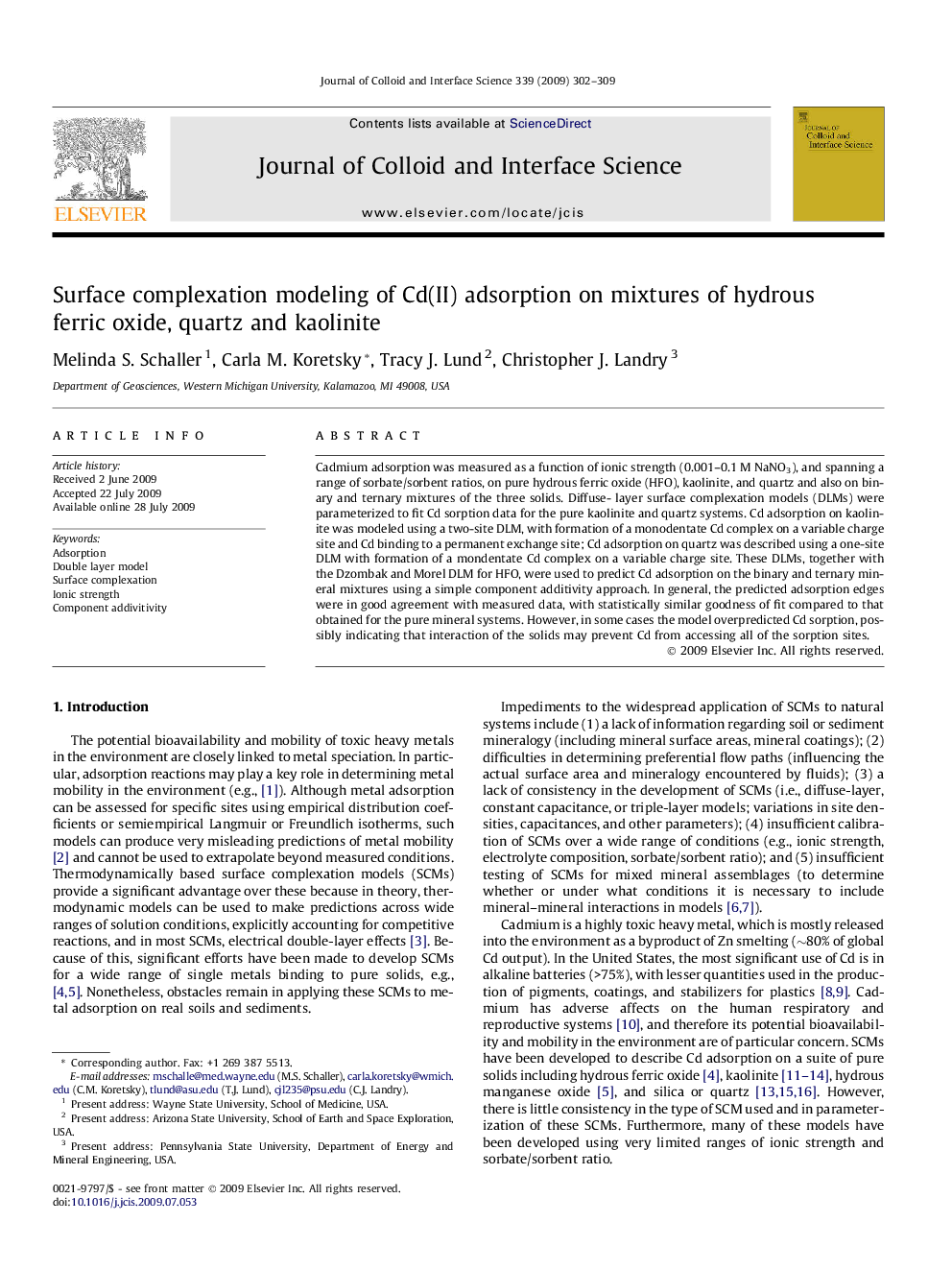| Article ID | Journal | Published Year | Pages | File Type |
|---|---|---|---|---|
| 610269 | Journal of Colloid and Interface Science | 2009 | 8 Pages |
Cadmium adsorption was measured as a function of ionic strength (0.001–0.1 M NaNO3), and spanning a range of sorbate/sorbent ratios, on pure hydrous ferric oxide (HFO), kaolinite, and quartz and also on binary and ternary mixtures of the three solids. Diffuse- layer surface complexation models (DLMs) were parameterized to fit Cd sorption data for the pure kaolinite and quartz systems. Cd adsorption on kaolinite was modeled using a two-site DLM, with formation of a monodentate Cd complex on a variable charge site and Cd binding to a permanent exchange site; Cd adsorption on quartz was described using a one-site DLM with formation of a mondentate Cd complex on a variable charge site. These DLMs, together with the Dzombak and Morel DLM for HFO, were used to predict Cd adsorption on the binary and ternary mineral mixtures using a simple component additivity approach. In general, the predicted adsorption edges were in good agreement with measured data, with statistically similar goodness of fit compared to that obtained for the pure mineral systems. However, in some cases the model overpredicted Cd sorption, possibly indicating that interaction of the solids may prevent Cd from accessing all of the sorption sites.
Graphical abstractCd adsorption on a mixture of kaolinite, quartz and hydrous ferric oxide is modeled using a component additivity approach with the diffuse-layer surface complexation model.Figure optionsDownload full-size imageDownload as PowerPoint slide
